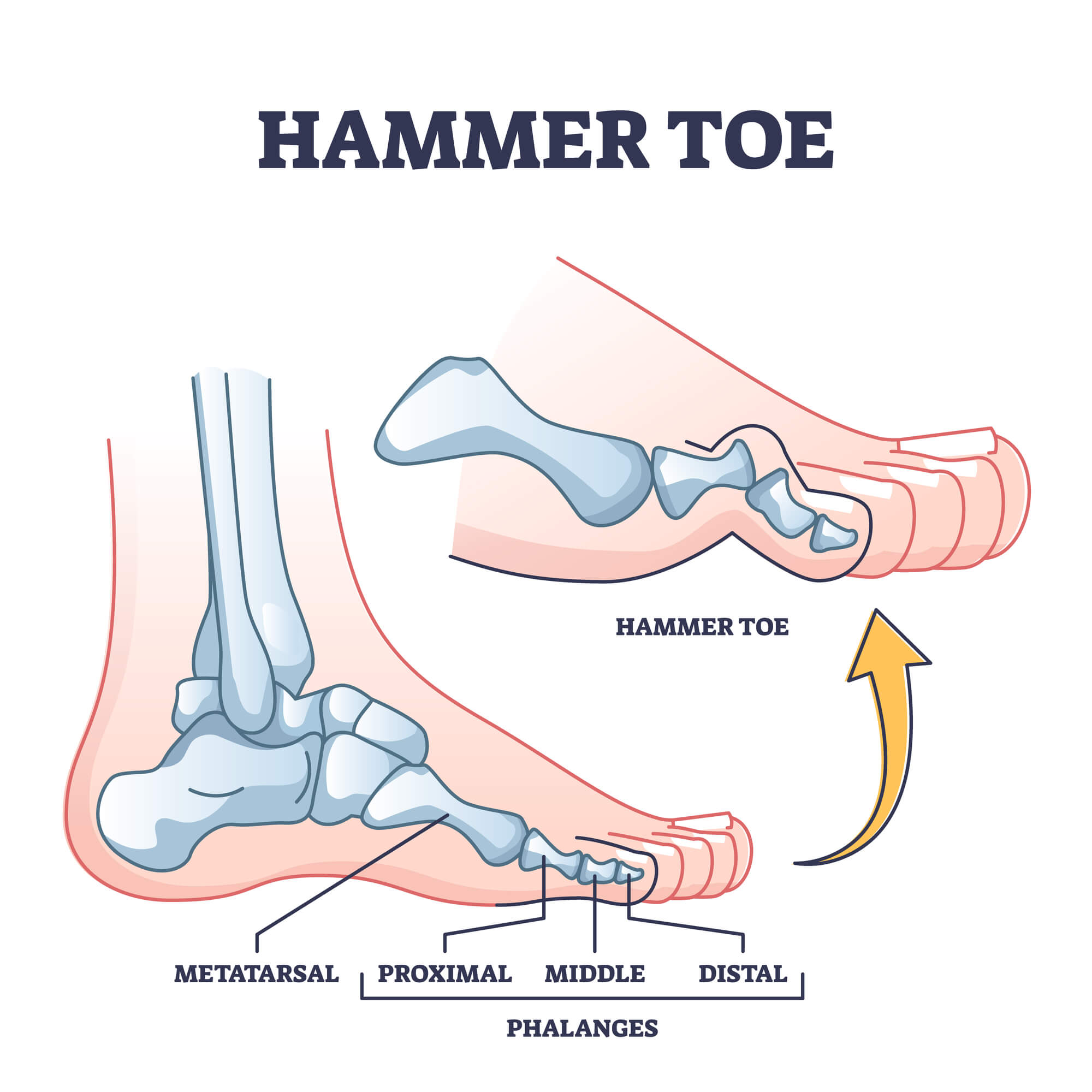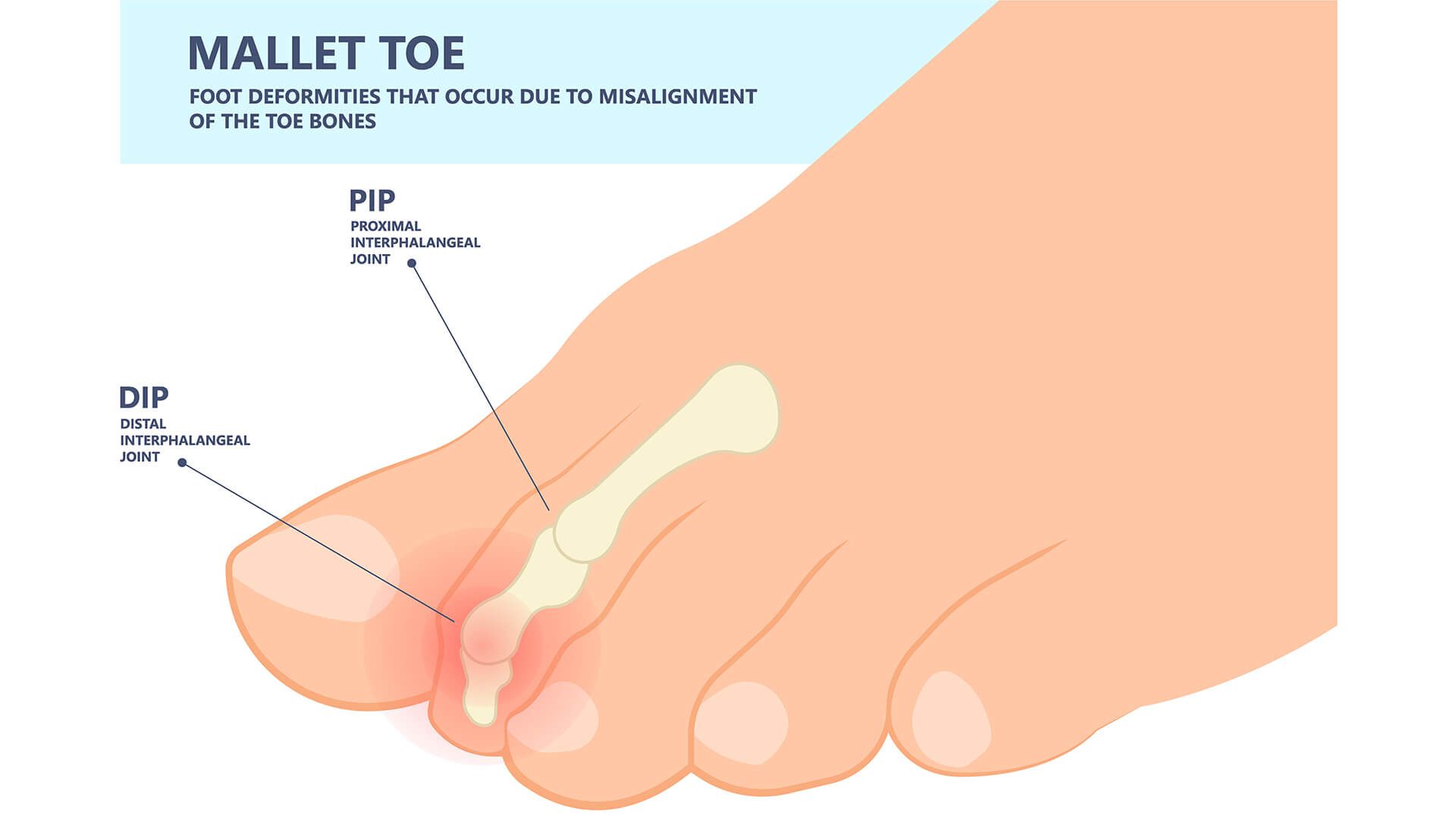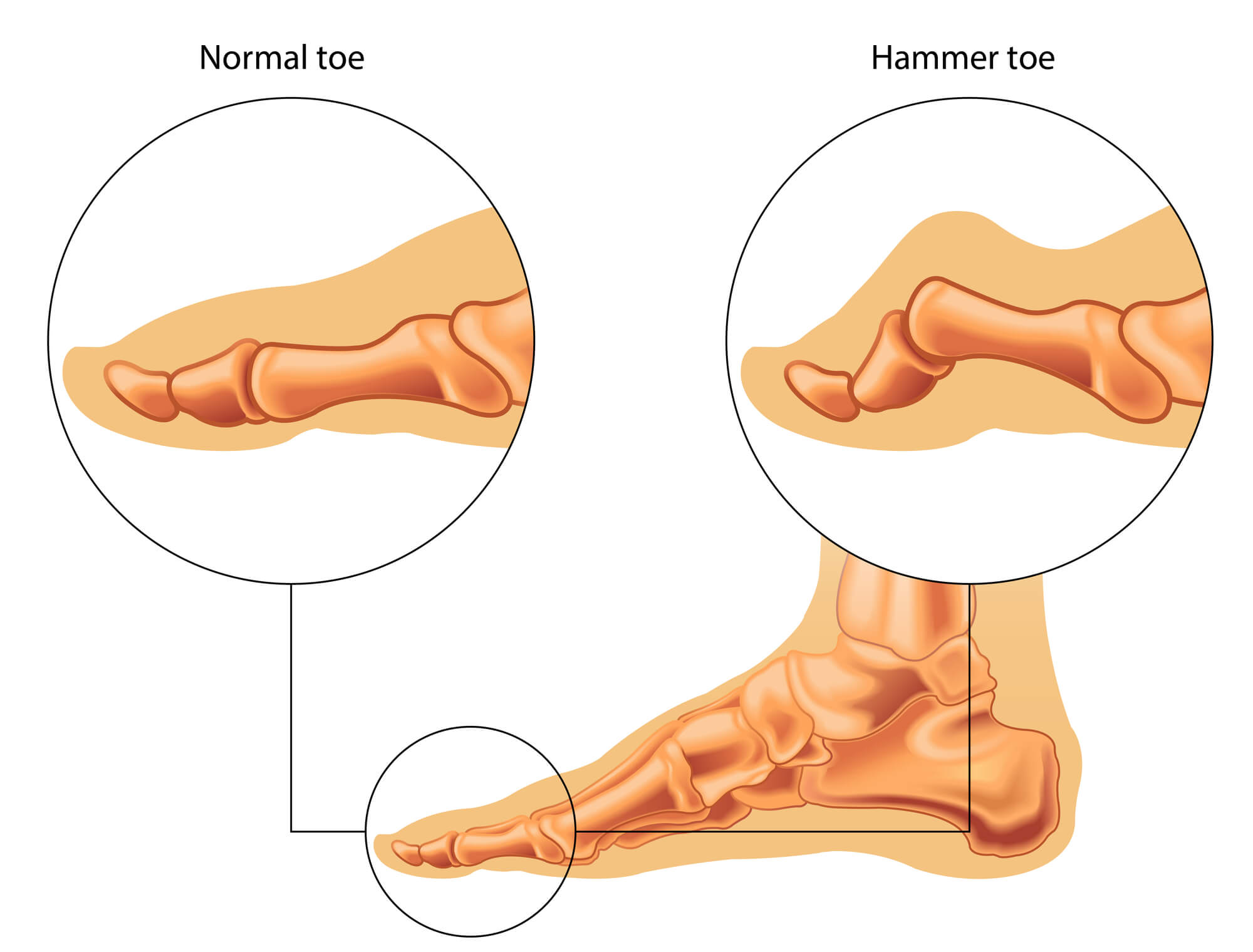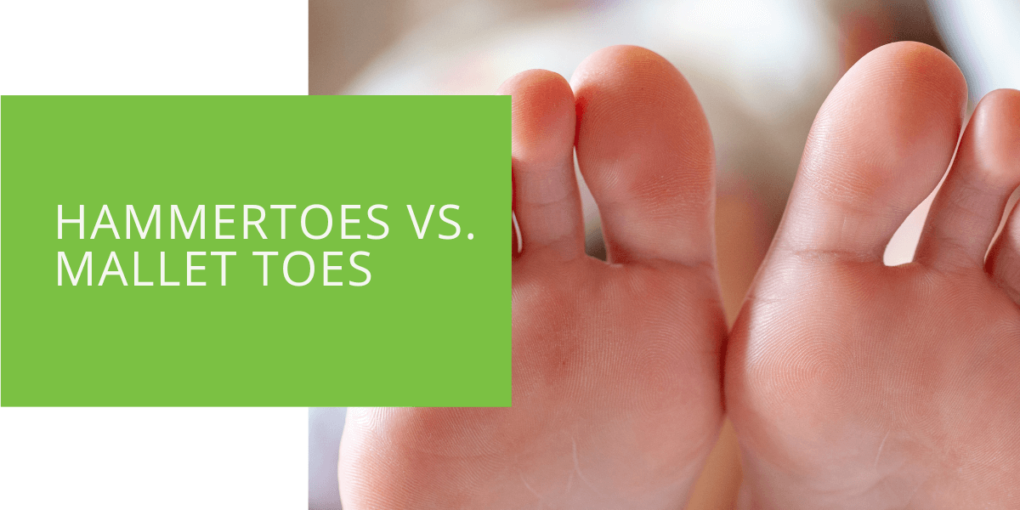Hammertoes vs. Mallet Toes
Are you experiencing pain or difficulty walking due to a bent or misaligned toe? You may be suffering from a hammertoe or mallet toe. Genetic factors, tight-fitting shoes, and muscle and tendon problems can cause these common foot deformities. This article will explore the differences between hammertoes and mallet toes, their symptoms, treatment options, and prevention methods. By understanding these conditions, you can take steps to alleviate your symptoms and prevent these deformities from occurring.
What Are Hammertoes and Mallet Toes?
Hammertoes
A hammertoe is a deformity that occurs when one of the toes becomes bent at the middle joint, causing it to resemble a hammer. This deformity can occur in any toe, but it is most common in the second toe. Various factors, including genetics, tight-fitting shoes, and problems with the muscles and tendons in the foot, can cause hammertoes.

Mallet Toes
A mallet toe is similar to a hammertoe, but it affects the joint at the end of the toe rather than the middle joint. Like hammertoes, mallet toes can be caused by genetics, tight-fitting shoes, and muscle and tendon problems. They are most commonly found in the second or third toe.
Symptoms and treatment of hammertoes and mallet toes

Symptoms
Both symptoms of hammertoes and mallet toes are similar, including:
- Pain when walking or standing
- Difficulty moving the affected toe
- Corns or calluses on the toe or foot
- Redness and swelling in the affected area
Treatment
Treatment for hammertoes and mallet toes may include:
- Wearing properly fitting shoes with a wide toe box
- Using pads or inserts to relieve pressure on the affected toe
- Exercising the toes to strengthen the muscles and improve flexibility
- Using non-steroidal anti-inflammatory drugs (NSAIDs) to reduce pain and swelling
- In severe cases, surgery may be necessary to correct the deformity
If you are experiencing any of the above symptoms, it is important to consult with a podiatrist. Podiatrists are medical professionals who specialize in diagnosing and treating foot and ankle conditions. They can help determine the cause of your symptoms and recommend the best treatment.

Preventing Hammertoes and Mallet Toes
Wearing Proper Footwear
One of the most effective ways to prevent hammertoes and mallet toes is to wear properly fitting shoes with a wide toe box. This allows the toes to move freely and reduces the risk of the toes becoming bent or cramped.
Stretching and Strengthening Exercises
Stretching and strengthening exercises for the toes and feet can also help prevent hammertoes and mallet toes. Examples of these exercises include:
- Picking up marbles or other small objects with your toes
- Using a towel to try to scrunch it under your foot
- Standing on a rolling pin or foam roller and rolling it back and forth under your foot
Avoiding High Heels and Tight-Fitting Shoes
High heels and tight-fitting shoes can increase the risk of developing hammertoes and mallet toes. It is best to choose shoes that are comfortable and provide plenty of room for the toes to move freely.
Orthotics
Orthotics are special inserts that can be placed in the shoes to help correct foot deformities and improve alignment. They can be particularly helpful for people with hammertoes and mallet toes. Podiatrists can recommend the best type of orthotics for your specific needs.
Splints
Splints are other treatment options that a podiatrist may recommend. A splint is a device that helps hold the toe in the desired position and can help prevent the deformity from worsening.

Differences Between Hammertoes and Mallet Toes
The main difference between hammertoes and mallet toes is the joint affected by the deformity. A hammertoe is a deformity that occurs when one of the toes becomes bent at the middle joint, causing it to resemble a hammer. This deformity can occur in any toe, but it is most common in the second toe. On the other hand, a mallet toe is similar to a hammertoe, but it affects the joint at the end of the toe, which is closest to the tip of the toe. Mallet's toes are most commonly found in the second or third toe.
Another difference between hammertoes and mallet toes is the type of deformity. Hammertoes cause the toe to bend down at the middle joint, giving it a hammer-like appearance. Mallet toes, on the other hand, cause the tip of the toe to bend down, giving it a claw-like appearance.
It is important to note that similar factors, including genetics, tight-fitting shoes, and muscle and tendon problems, can cause both hammertoes and mallet toes. However, the joint affected and the type of deformity will determine the best course of treatment. A podiatrist can help determine the cause of your toe deformity and recommend the most appropriate treatment options.
Conclusion
Hammertoes and mallet toes are common foot deformities that cause pain and difficulty walking. While these conditions are similar, they affect different joints of the toes. Treatment may include wearing proper footwear, doing stretching and strengthening exercises, and using orthotics. In severe cases, surgery may be necessary. Consult with a podiatrist for the best treatment options for your specific needs.

